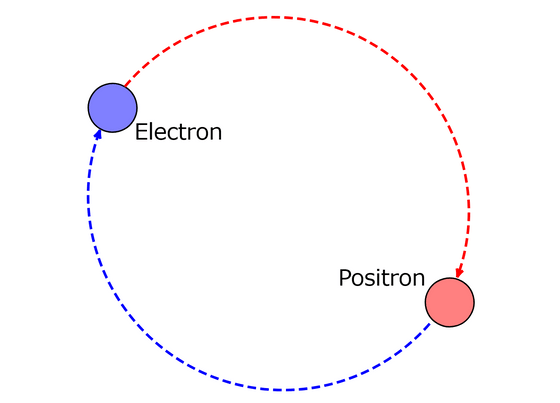A team from the University of Tokyo successfully cooled an exotic atom made of antimatter, ``positronium,'' to near absolute zero.

A research team from the University of Tokyo and the European Organization for Nuclear Research (CERN) has announced that they have succeeded in cooling
[2310.08761] Laser cooling of positronium
https://arxiv.org/abs/2310.08761
Phys. Rev. Lett. 132, 083402 (2024) - Positronium Laser Cooling via the 1 3 S−2 3 P Transition with a Broadband Laser Pulse
https://journals.aps.org/prl/abstract/10.1103/PhysRevLett.132.083402
AEgIS experiment paves the way for new set of antimatter studies by laser-cooling positronium | CERN
https://home.cern/news/news/experiments/aegis-experiment-paves-way-new-set-antimatter-studies-laser-cooling
Breakthrough: Positronium Cooled By Laser in a World First : ScienceAlert
https://www.sciencealert.com/breakthrough-physicists-cooled-antimatter-to-near-absolute-zero-for-the-first-time
Positronium is an atom made up of a negatively charged electron and its opposite, the positron. Also, when positronium and antiprotons collide, the positrons of positronium and antiprotons combine to produce antihydrogen.

For this reason, positronium is ideal for experiments investigating the properties of antimatter, but it is extremely unstable and annihilates into gamma rays in just 142 billionths of a second. Moreover, positronium produced in a cloud of particles flies around at various speeds, making it difficult to pinpoint its location.
One solution to this problem is
The research team behind the AEgIS experiment at CERN used broadband laser cooling to target a wide velocity distribution, lowering the temperature of positronium from 380 Kelvin (approximately 106 degrees Celsius) to 170 Kelvins (approximately minus 103 degrees Celsius). It was very successful. The research team plans to aim to break through the 10 Kelvin barrier in the future.

by CERN - Politecnico di Milano
Furthermore, a research team led by
Although the research of both teams is independent, they have shared their results regarding laser cooling of positronium. posted the paper on the preprint server arXiv on the same day.
Antimatter holds many possibilities, including mysteries regarding the formation of the universe. When the universe was formed with the Big Bang, equal amounts of normal matter and antimatter should have been created in the universe, but the current universe is mostly made of matter. If we can learn more about the behavior of antimatter using the cooling technology established this time, it may provide important clues in investigating the whereabouts of the missing antimatter.

Scientists also want to create Bose-Einstein condensates (BECs) of positronium. Bose-Einstein condensation is a phenomenon in which when a cloud of particles is cooled to the very edge of absolute zero, it becomes like one gigantic elementary particle. The BEC of positronium emits coherent gamma rays through the annihilation of matter and antimatter, which is a very powerful tool in elucidating the fundamental structure of atoms.
Ruggero Calavita, CERN's AEgIS spokesperson, said: 'If antimatter BECs can produce coherent gamma-ray light that allows researchers to peer into the nucleus of an atom, it will be a great opportunity for basic research and applications. It will be a great tool for both research.'
Related Posts:
in Science, Posted by log1l_ks







